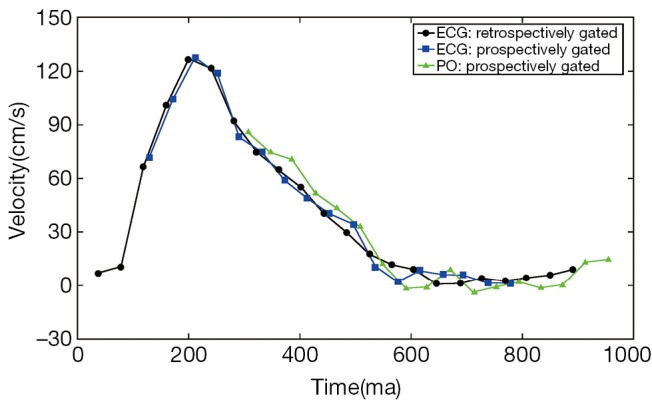Figure 8.

Velocity waveforms in the ascending aorta as acquired with electrocardiogram (ECG) triggering with both prospective and retrospective cardiac gating as well as pulse oximeter (PO) triggering with prospective cardiac gating. Since prospective cardiac gating relies on certain triggers of the ECG/PO waveforms, the acquisition waits for these triggers. For vessels close to the heart, a portion of the velocity waveform has already occurred by the time the trigger has occurred, resulting in missing portions of the velocity waveform. A greater proportion of the waveform is missing with PO triggering because the pulse wave must travel to the finger—leading to a delayed trigger for gating.
